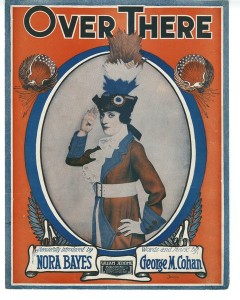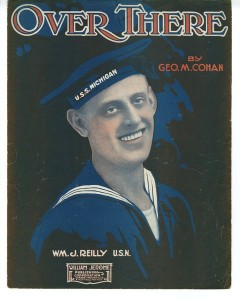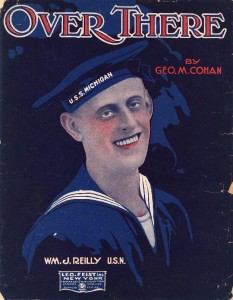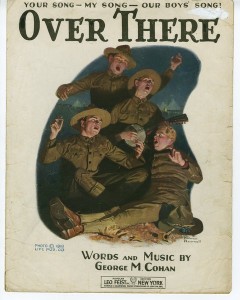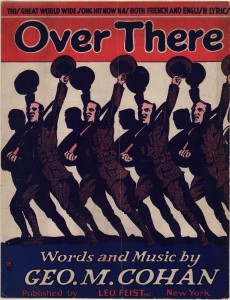The Library of Congress’ “National Jukebox” collection holds an abundance of songs from the 1920s that did not seem to surpass the test of time as there is a lack of evidence for many of these songs in the corners of the internet. The recording I looked at here is “Way Down Home” from 1925. The following is what I could understand of the lyrics. The dashes represent words I couldn’t quite make out. 1
I never felt so happy
I never so gay
I never felt so much like smiling at the —– this very day
I’m gonna roam back yonder
Among the fields of green(of green)
I’ll soon be on my way to heaven
Don’t you know where I mean?
I mean way down home
I’d rather be there(I’d rather be there)
In a rocking chair(In a rocking chair)
Where someone all alone
Will kiss and caress me
To a hearty —–
We’ll smile for money
I declare
I’d be a —- millionaire
With all the — waiting there
Waiting there(waiting there)
On my knees I’m ready to swear
Way down home
I’ll wait from way down home
I ain’t forgotten about the corn and the cotton in the fields —-
Way down yonder
That’s where I wonder wonder
That’s the end of perfect day
I want to listen to the tune I’ve been missing
With a sail of of —- bay
I want to buckle to my sweet honey suckle
When the preacher comes our way
I mean home
Way down home
I’d rather be there(I’d rather be there)
In a rocking chair(In a rocking chair)
Where someone all alone
Will kiss and caress me
To a hearty —-
We’ll smile for money
I declare
I’d be a —- millionaire
With all the — waiting there
Waiting there(waiting there)
On my knees I’m ready to swear
I’ll never walk away from my home, my home
My sweet home, my home
My sweet home, my home
Way from way down home
Way from way down home
Down home
The song was written by Walter Donaldson and performed by a quartet called the Shannon Four: Franklyn Baur, Wilfred Glenn, Lewis James, and Elliott Shaw. Later the group changed their name to “The Revelers”. 2The first thing that stood out to me was the exceptionally positive lyric choices. This contrasts the fact that the speakers are not in the place they are longing to be(home). It is possible that the exceptional positivity comes from the chord structure as well. Much of the piece is in a major key with predictably major chord progressions. Maybe it is the thought of home that maintains the speaker’s joy. This makes the last line especially stand out as a switch to minor. The song also doesn’t offer a solution to the sad ending, possibly as a point to the lack of homelessness.
Considering the time period and the fact that the performers and composer are all white, it can easily be assumed that the intended audience was also white. However, the tradition of barbershop quartets stem from a combination of Black American musical styles and white American musical styles.
1 Donaldson, Walter, Walter Donaldson, Franklyn Baur, Shannon Four, Elliott Shaw, Wilfred Glenn, and Lewis James. Way Down Home. 1925. Audio. https://www.loc.gov/item/jukebox-711535/.
2 Hoffmann, Frank, ed. Encyclopedia of Recorded Sound. Oxford: Taylor & Francis Group, 2004. Accessed November 15, 2024. ProQuest Ebook Central.

